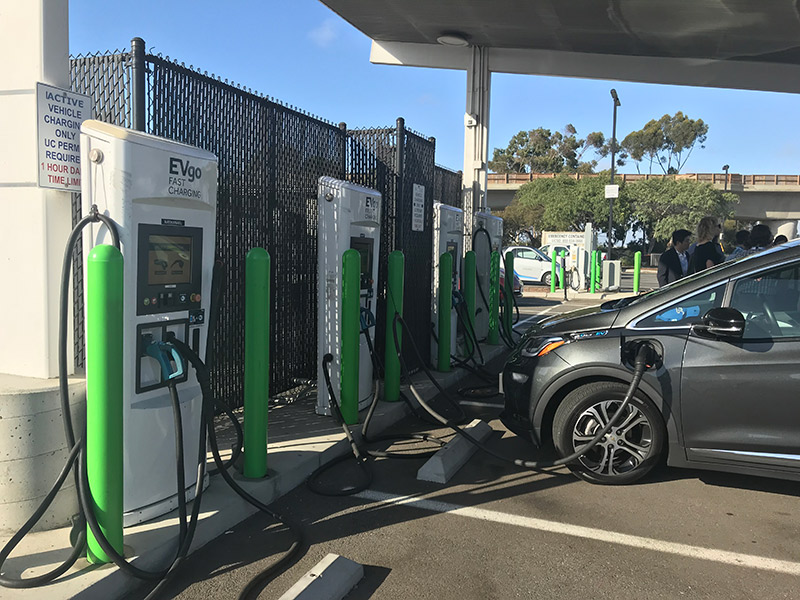This month we are considering two profound changes in the role of electricity and renewable electricity in particular: EVs and electric cooking in developing countries. Electric vehicles can be the savior of the electric utility industry, reversing the decline in kWh sales caused by increasing end-use efficiency and behind-the-meter solar PV.
The increase in kWh sales from adoption of EVs is obvious. The carbon reduction benefit is almost as obvious since renewable energy is becoming the fastest (maybe only) growing form of new generation. What is less obvious is how unprepared the electric distribution system is for the requirements of charging stations.

A fast charger that can add 100 miles to a car’s range in 15 minutes requires 100 kW of capacity that gets slapped onto the distribution system instantaneously. Two hundred miles of range in 10 minutes requires 300 kW of distribution capacity for a single charger. Many gas stations have eight or more pumps. These customers are already suffering from high demand charges on their utility bills, but EV charging could make demand charges an even higher proportion of their bills.
The math becomes overwhelming, when you consider that the distribution feeder and transformer serving commercial customers like gas stations and convenience stores may have 50 kW of capacity for their whole facility. The alternative to massive investments in new wires, transformers, and substations is hybrid distributed power systems on-site at the charging stations.
It is a complicated question. Solar can supply the energy, but these systems will need batteries to supply the demand when the sun is not shining. Charging an EV’s battery from a stationary battery doesn’t sound efficient, but properly designed, this can be less costly than upgrading the distribution system.
The many factors going into this analysis easily swamps a spreadsheet approach to the problem. So, we have added EV charging to HOMER Grid to identify where this makes sense, what size battery would be needed, and what the impact of different tariff and incentive structures would be on the user’s utility costs. The hybrid system also turns the charging station into sustainable infrastructure during grid outages.
The plummeting price of PV and batteries is also revolutionizing mini-grids and electric cooking
Three billion people still rely on collecting firewood or buying charcoal for cooking. The resulting indoor air pollution is responsible for 4.3 million premature deaths per year, almost entirely among women and children. In many places the collection of firewood, either for direct use or production of charcoal, is causing deforestation, which is not only a carbon problem, but also adversely affecting the local environment through desertification. In the past, the best solution was LPG, but now it is possible to design hybrid mini-grids with the capacity to serve cooking loads cost-effectively.
In addition to lower cost PV and batteries, efficient pressure cookers are now available. These reduce in half the power requirement for rice cooking, for example. This is also a complicated analytical problem because it would dramatically change the load shape of a mini-grid. HOMER Pro is being used to identify where this makes sense and what the impacts of this new technology and electric end-use will be on system design, system costs, and the appropriate tariff structure to optimize the benefits to both the end users and the system owner. See our story on eCooking for more details
Finally, we would like to remind you that the 8th Annual HOMER International Microgrid Conference will be taking place again this year – October 12-16, 2020. The only difference is, it will be virtual. We consider this a great opportunity to include many HOMER users from international locations who may not have been able to travel to our conference in the past.
We are pleased to announce the first speakers of what promises to be an impressive speaker line-up. Stay tuned for more announcements to come as we review the many speaker proposals submitted. You can read about our first speakers on our conference site, and stay tuned for registration, which will be open soon.
